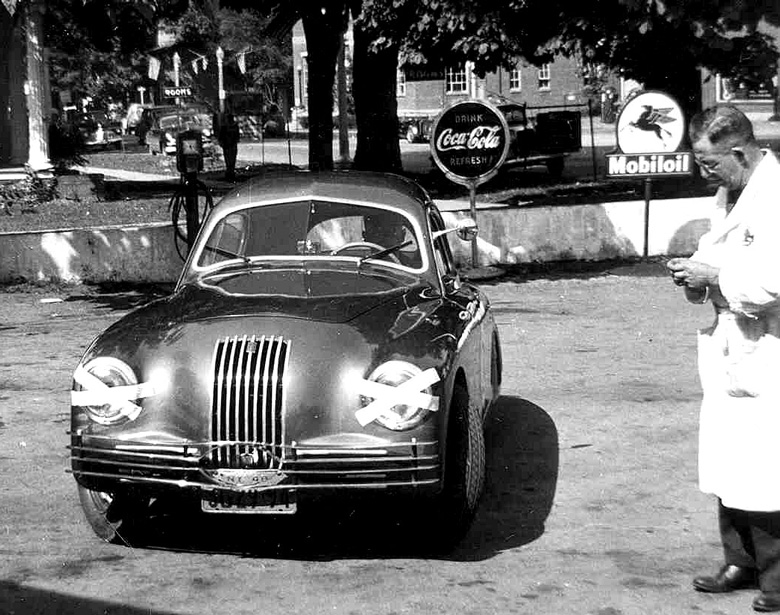
One of the Editor’s favorite images; Frank Shaffer took this photo of Tony Pompeo’s Fiat 1100S at Watkins Glen in 1949.
Story by Gijsbert-Paul Berk and friends
Fiat 1100S
While Pierre Dusio was making a huge impact with his 1100 Fiat-powered Cisitalias, back at Fiat they weren’t idle and eager to return to some normalcy. As early as 1947 the Fiat 1100 S sports coupe made its appearance and was an immediate success, both in term of sales and results. Its shape was somehow reminiscent of its predecessor, the 1938 MM. With a maximum height of 1 m, 35 cm it was 1 cm higher than the pre-war car, but still much lower than the saloon, which measured 1 m 51cm. The compression ratio of the 1089 cc. four cylinder was raised to 7.5 : 1 and the S engine delivered 51 HP at 5200 rpm. With a dry weight of just 818 kg (1803 lbs.) this made an acceleration of 0 – 100 km/h (62 mph) in. 21.5 sec possible and a top speed of 150 km/h (93 mph). Of course, many lucky owners participated in the Mille Miglia and other competitions.
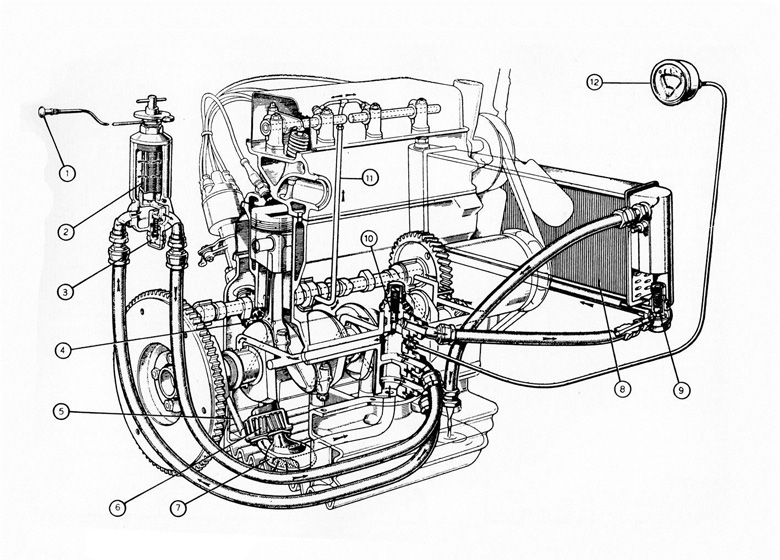
To keep the engine oil at a reasonable temperature – important during long distance races – the sump of the 1100S was increased in capacity and had large cooling fins. These engines could be equipped with an oil cooler (extra radiator) as an option.
1) Knob on the dashboard for cleaning the filter 2) Oil filter with disks 3) Regulator valve to limit oil pressure 4) Pair of gears driving the oil pump 5) Small tube to return engine oil from cylinder head 6) Gear pump 7) Oil aspiration filter 8) Oil radiator 9) Safety valve 10) Regulator valve to limit oil flow to radiator11) Small tube for the lubrication of the valve mechanism 12) Oil pressure gauge Coutesy ‘Tutte le Fiat’
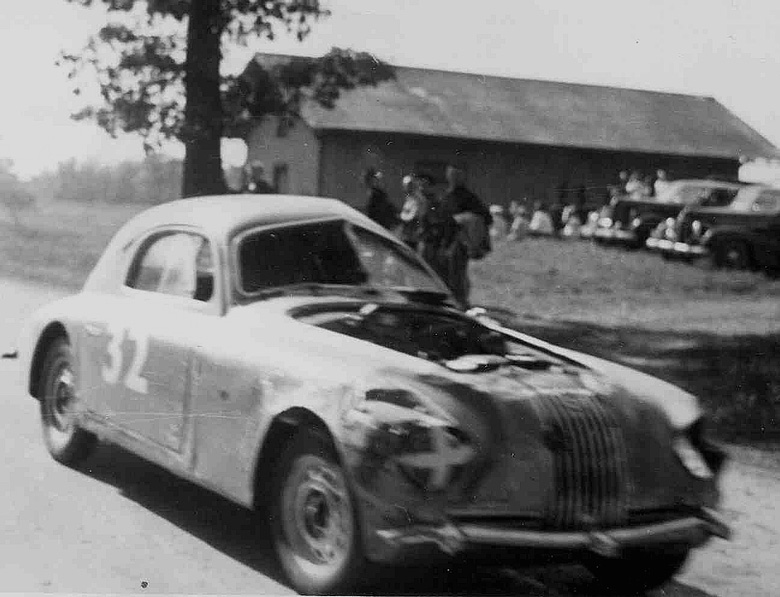
Perhaps demonstrating the strength of the Fiat chassis and body, Keller somehow managed to roll his 1100s before the end of the first lap of the 1949 Watkins Glen Grand Prix but was able to at least make it back to town. Photo by Frank Shaffer.
If you like this article, click here to subscribe to VeloceToday!
By 1949 at least two of the 401 1100S coupes, now known as “MM”s for Mille Miglia, had arrived in the US. One went to importer Tony Pompeo, and another to a Robert Keller of Detroit. Both were entered in 1949 Watkins Glen Grand Prix. Pompeo finished 25th in his dark blue Fiat. Although not noted in any reports, Keller apparently rolled his on the first lap. VeloceToday’s intrepid reporter Frank Shaffer caught this photo of the Keller Fiat shortly after the incident.
The 1100 E
The next year saw the postwar upgrading of the popular Fiat 1100. In 1948, the four-door saloon and taxi were renovated. Their interior was modernized with new trim, a redesigned dashboard and replacing the three spoke steering wheel by a more modern two spoke one.
However already in 1949 Fiat replaced this 1100 B with the 1100 E. The main difference was that the E had a slightly larger luggage compartment with the spare wheel now under a rounded trunk cover. Dry weight went up to 940 kg. But with a compression ratio of 6.1 : 1 and a larger single choke carburetor, torque increased and the maximum engine power was brought to 35 HP (26 kW) at 4,400 rpm.
The French cousins
Simca started before the war as an assembly plant for French Fiat cars. After the war the company became independent, albeit with strong financial ties with the Agnelli family, still major shareholders in the Fiat group. One day in 1947 Simca’s CEO Henri Pigozzi, on a business visit to Turin, spotted a very elegant small cabriolet fitted on a Fiat 1100 chassis and designed by Pinin Farina. He was so impressed that he persuaded Fiat and Farina to grant hem the licensing rights for the production of this body in France. Because Pigozzi knew that the Simca 8 and Fiat 1100 chassis were identical and was convinced that such a model would boost the image of Simca.
At the 1948 Paris motor show Simca unveiled an Italian made prototype. It received so much interest among affluent prospects that Pigozzi commissioned Jeane Daninos of Facel Métallon, supplier of bodies and body parts to various French manufacturers to prepare its production. Daninos also created a fixed top coupé for the Simca 8 Sport. When these cars were exhibited at the 1949 Paris Motor show, the four cylinder engines of the entire Simca 8 range had grown to 1221 cc (bore x stroke: 75 x 75 mm ). The coupe and cabriolet now disposed of 50 HP at 4800 rpm. However, they cost about twice as much as Simca’s four-door saloons with (only) 40 HP at 4400 rpm. Power and beauty have their prize!
The Fiat 1100ES
The life of the Fiat 1100 as conceived by Dante Giacosa was coming to an end. The E model would serve well until 1953, when the Nuova 1100 would be introduced. In the meantime, Pinin Farina left his mark with the 1100ES, which in 1949-50 superseded the famous Mille Miglia coupe.
Apparently several hundred of these very attractive coupes were built, but the performance level was down compared to the previous version. And very few survive today (readers can you help?). This all may be due to the bodies being fabricated in steel instead of aluminum. At least we think they were; the Editor recalls seeing one in the U.S. in 1969 already almost totally rusted through. We may be wrong, and if so you will let us know.
Another story about the 1100ES is that it was the first car Sergio Pininfarina purchased from the company, and used it for his honeymoon. Since it is so rare, we have included several images of the car below.
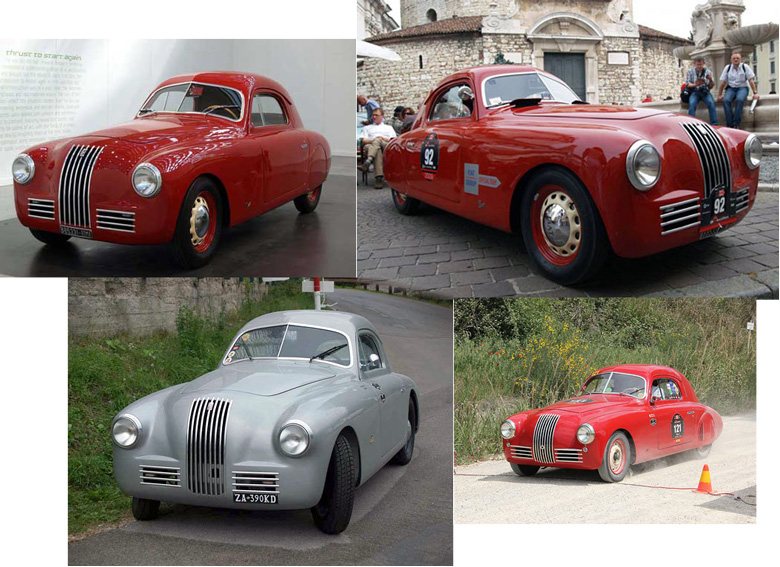
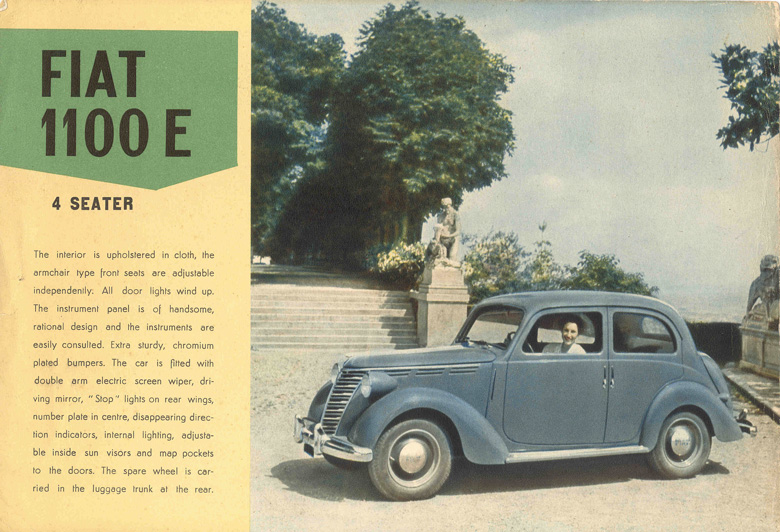
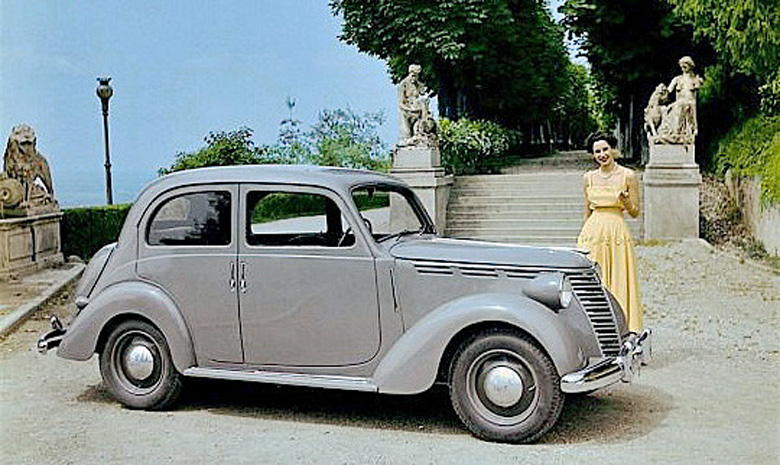
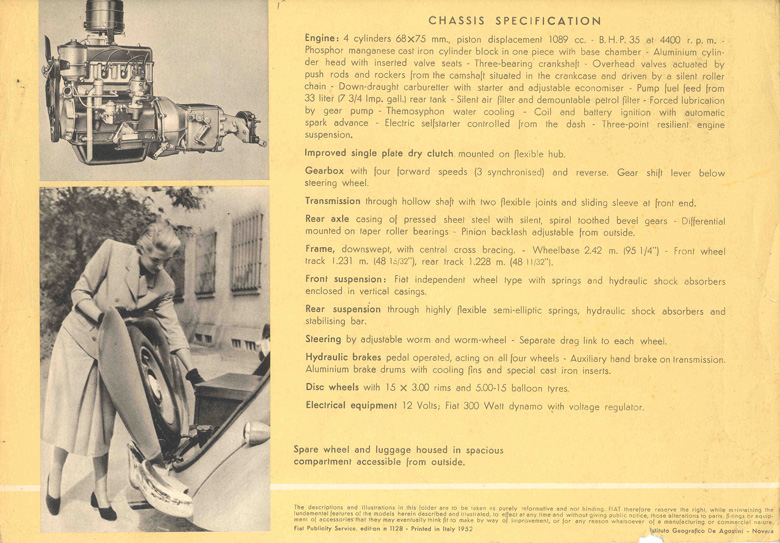
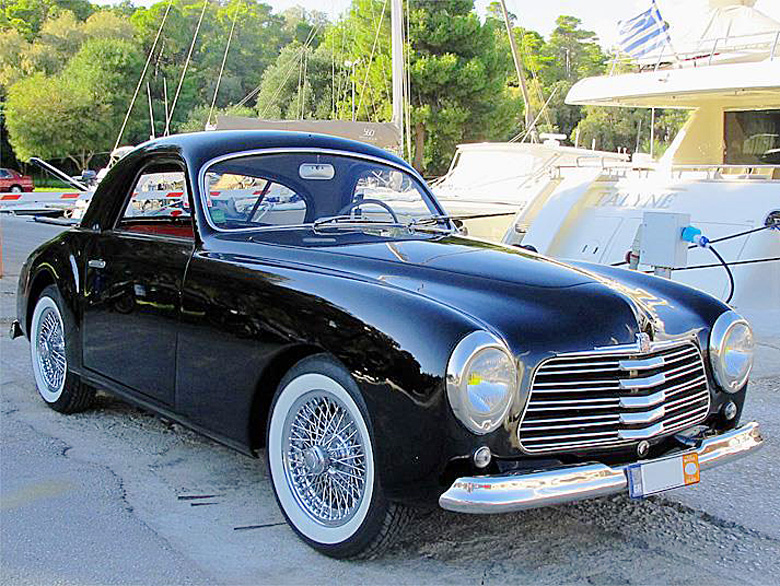
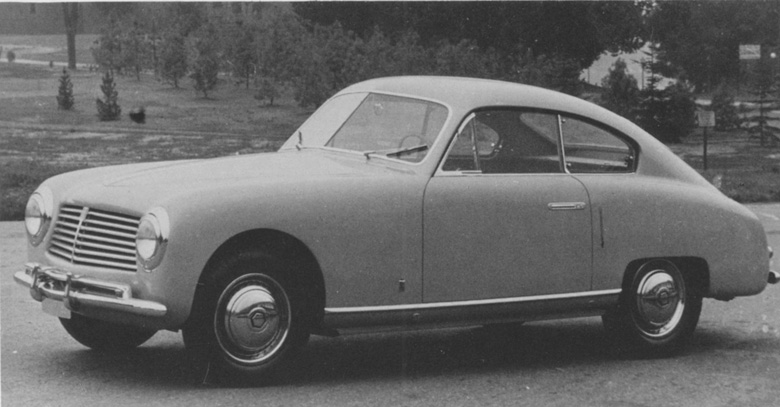

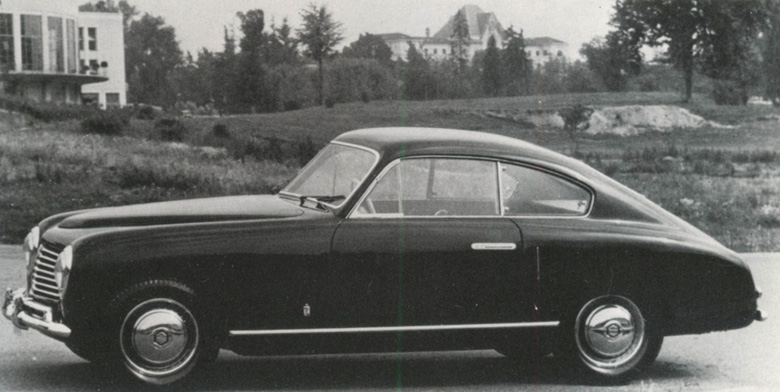
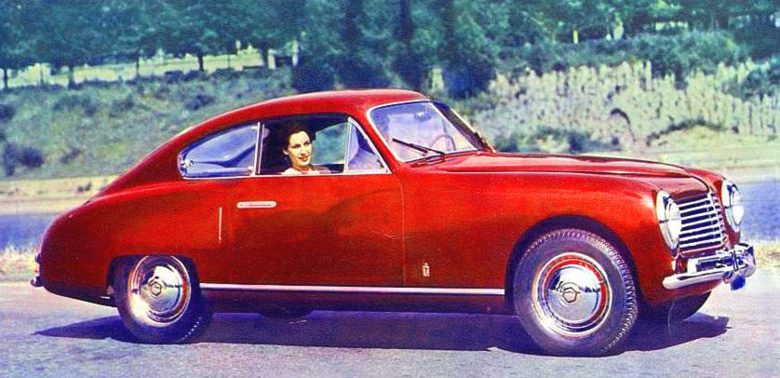
Pete–
Fascinating that lovely SIMCA prototype was introduced as early
as Fall of 1948. Makes me curious how early production began
and customers receiving their cars.?
Hat off to the author oin another job well done!
Jim sitz
Re Watkins Glen
The Fiat 1100 was owned by Bob Keller and Dick Haynes. Keller was the son of Chrysler Chairman K. T. Keller And his friend Dick Haynes owned Little Harry’s an east side Detroit restaurant. I believe that it was Haynes who rolled the car leaving Keller with a mess to drive in later races. Give credit where credit is due. Paul Farago did all the tuning and co drove with Keller at Sebring in the car.
Also, and hopefully I have gotten the name right, a Jim Profitt of Long Beach, CA had a couple of the 1100s on shelves in his garage. He had also owned the BMW Mille Miglia raced at the Glen and now the property of BMW.
Pretty neat Pete,
Frank Shaffer
I remember to have seen those cars in Montevideo ( Uruguay ) the Fiat Couoe very destroyed but probably there are a pair of Simcas not restored, and also the 1954 Simca Coupe that looks very nice with very different style